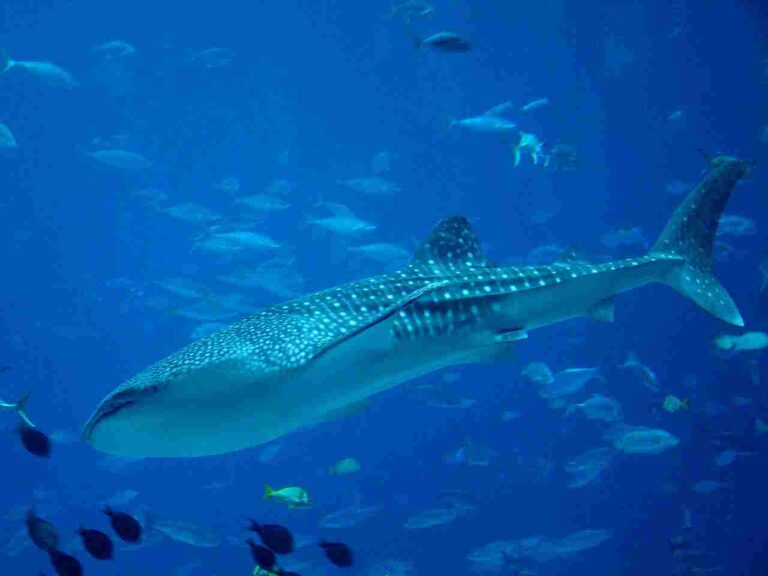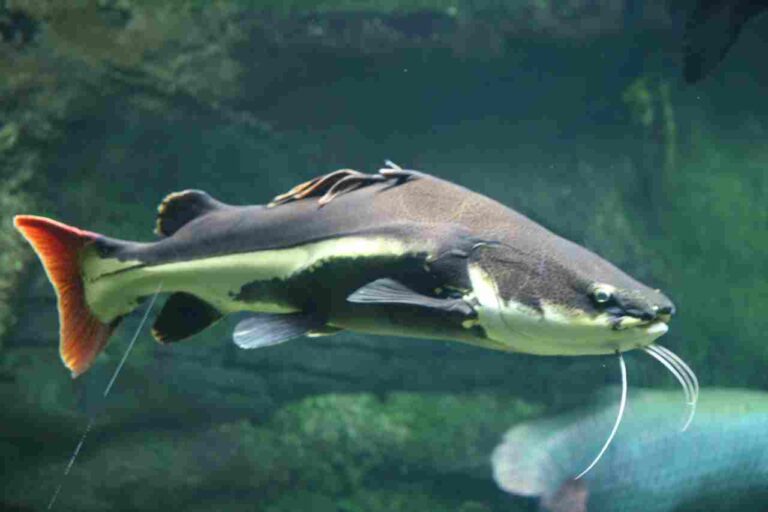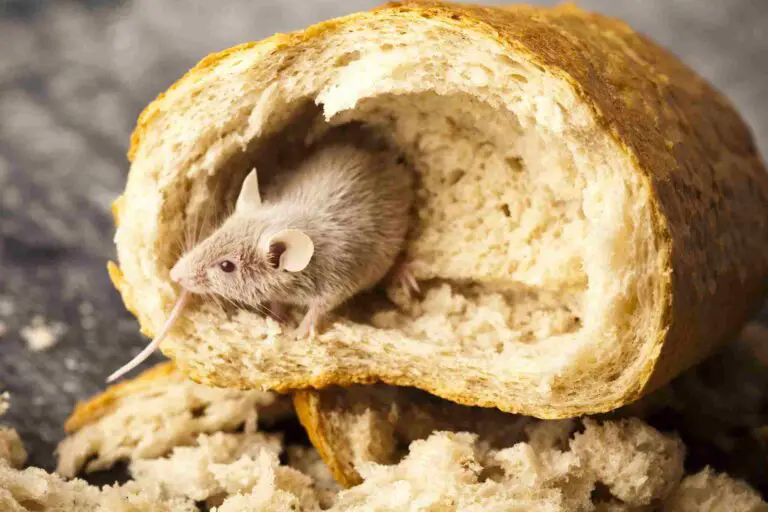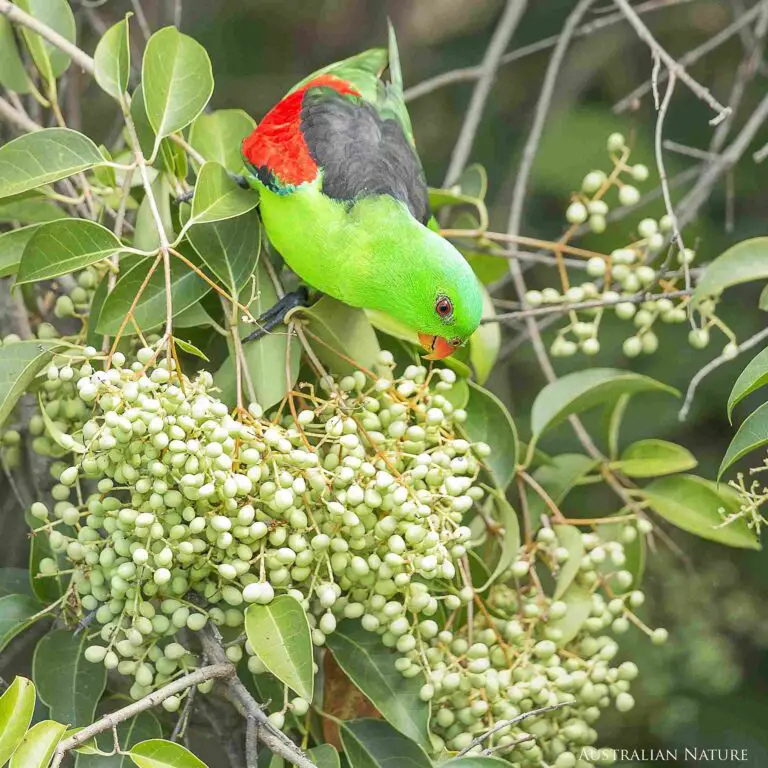What Eats a Starfish? 11 Starfish Predators Discussed
Animals that eat a starfish include; king crabs, lobsters, seagulls, marine bony fish, sea turtles, octopuses, manta rays, benthic sharks, sea otters, marine snails, and even larger starfish. Each predator has its own unique adaptations and hunting strategies to capture and consume starfish.
What Animals Eat Starfish?
1). King Crab
The king crab is a formidable predator that preys on starfish. This crustacean can be found in the cold waters of the northern hemisphere, particularly in the Bering Sea and the North Atlantic Ocean. With its powerful claws, the king crab is well-equipped to capture and consume starfish.
One of the key features that the king crab uses to hunt starfish is its sharp and strong claws. These claws are capable of crushing the hard exoskeleton of the starfish, allowing the king crab to access the soft tissues inside. The king crab’s claws are also used to hold onto the starfish, preventing it from escaping.
In addition to starfish, the king crab also preys on a variety of other marine organisms. Its diet includes mollusks, fish, and even other crustaceans. This diverse diet ensures that the king crab can find food even when starfish populations are low.
The king crab’s hunting strategy involves using its keen sense of smell to locate potential prey. Once it detects the scent of a starfish, the king crab will use its powerful legs to move towards its target. With its claws ready, the king crab will then seize the starfish and begin the process of consuming it.
It’s worth noting that the king crab is not the only predator of starfish. Other animals, such as sea otters and larger starfish, also feed on these echinoderms. However, the king crab’s ability to crush the starfish’s exoskeleton with its powerful claws gives it a distinct advantage in capturing and consuming these creatures.
2). Lobster
Lobsters are another animal that preys on starfish, making them a significant starfish predator in marine ecosystems. These crustaceans can be found in various oceans around the world, including the Atlantic Ocean, the Pacific Ocean, and the Indian Ocean.
Lobsters use their powerful claws to capture and consume starfish. Their claws are designed to crush the hard exoskeleton of the starfish, allowing them to access the soft tissues inside. With their strong grip, lobsters can hold onto the starfish, preventing any chance of escape.
In addition to starfish, lobsters also feed on a wide range of other marine organisms. Their diet includes mollusks, fish, and even other crustaceans. This diverse diet ensures that lobsters can find food sources even when starfish populations are low.
When hunting starfish, lobsters rely on their keen sense of smell to locate their prey. Once they detect the scent of a starfish, lobsters use their powerful legs to move towards their target. With their claws ready, lobsters seize the starfish and begin the process of consuming it.
3). Seagull
Seagulls are not only known for their presence at the beach, but they are also an animal that preys on starfish, making them a significant starfish predator in coastal ecosystems. These birds can be found in coastal regions around the world, including the Atlantic Ocean, the Pacific Ocean, and the Indian Ocean.
Seagulls use their sharp beaks and strong jaws to capture and consume starfish. Their beaks are designed to pierce through the tough outer layer of the starfish, allowing them to access the soft tissues inside. With their agile flight and keen eyesight, seagulls can spot starfish in the shallow waters or even on the shoreline.
In addition to starfish, seagulls also feed on a variety of other marine organisms. Their diet includes fish, crabs, mollusks, and even small seabirds. This diverse diet ensures that seagulls can find food sources even when starfish populations are low.
When hunting starfish, seagulls rely on their excellent aerial skills to locate their prey. They soar above the water, scanning the surface for any signs of starfish. Once they spot a starfish, seagulls swoop down and snatch it up with their beaks. They may also drop the starfish from a height to break it apart before consuming it.
Seagulls are opportunistic feeders and are known to scavenge for food as well. They are often seen scavenging for scraps near fishing boats or coastal areas where human activities are present. This adaptability allows seagulls to survive in various environments and maintain their population.
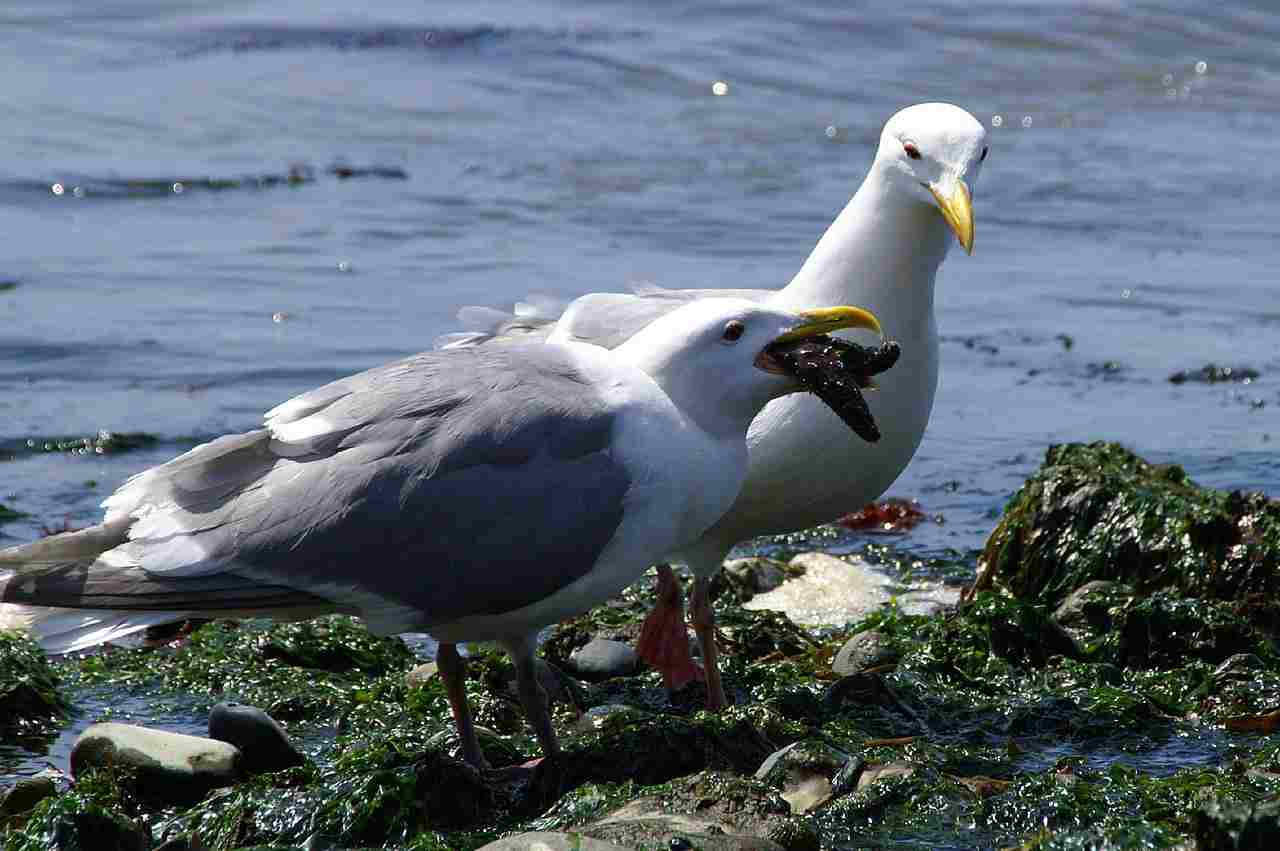
4). Marine Bony Fish
Marine bony fish are another group of animals that prey on starfish, making them important starfish predators in marine ecosystems. These fish can be found in various oceanic regions around the world, including the Atlantic Ocean, the Pacific Ocean, and the Indian Ocean.
With their streamlined bodies and powerful jaws, marine bony fish are well-equipped to capture and consume starfish. They use their sharp teeth to grip onto the starfish and tear apart its tough outer layer. Once they have gained access to the soft tissues inside, they can feed on the starfish.
In addition to starfish, marine bony fish also feed on a variety of other marine organisms. Their diet includes small fish, crustaceans, and mollusks. This diverse diet ensures that marine bony fish can find food sources even when starfish populations are low.
When hunting starfish, marine bony fish rely on their agility and speed to catch their prey. They swim swiftly through the water, using their keen eyesight to locate starfish hiding among rocks or coral reefs. Once they spot a starfish, they quickly close in and seize it with their jaws.
Marine bony fish play a crucial role in maintaining the balance of marine ecosystems by controlling starfish populations. Their predation helps to prevent starfish from overpopulating and damaging coral reefs and other marine habitats.
5). Sea Turtle
Sea turtles are fascinating creatures that not only inhabit the world’s oceans but also play a crucial role in maintaining the balance of marine ecosystems. These gentle giants are not only known for their graceful movements and unique appearance but also for their appetite for starfish, making them one of the important starfish predators in the ocean.
Sea turtles can be found in various oceanic regions around the world, including the Atlantic Ocean, the Pacific Ocean, and the Indian Ocean. With their strong jaws and sharp beaks, sea turtles are well-equipped to capture and consume starfish. They use their beaks to grip onto the starfish and tear apart its tough outer layer, gaining access to the soft tissues inside.
In addition to starfish, sea turtles also prey on a variety of other marine organisms. Their diet includes seagrass, jellyfish, crustaceans, and even small fish. This diverse diet ensures that sea turtles can find food sources even when starfish populations are low.
Sea turtles are known for their incredible swimming abilities. They use their powerful flippers to navigate through the water with ease. When hunting for starfish, sea turtles rely on their keen eyesight to locate their prey. They can spot starfish hiding among rocks or coral reefs and quickly close in to seize them with their beaks.
The predation of sea turtles on starfish is essential for maintaining the health of marine ecosystems. By controlling starfish populations, sea turtles help prevent overpopulation and the potential damage to coral reefs and other marine habitats. They contribute to the delicate balance of the ocean, ensuring the survival of various species and the overall health of the ecosystem.
6). Octopus
Octopuses are fascinating creatures that inhabit the world’s oceans and are known for their intelligence and unique hunting abilities. These soft-bodied predatory marine animals are not only starfish predators but also play a crucial role in maintaining the balance of marine ecosystems.
Octopuses can be found in various oceanic regions around the world, including the Atlantic Ocean, the Pacific Ocean, and the Indian Ocean. With their flexible bodies and powerful tentacles, octopuses are well-equipped to capture and consume starfish. They use their tentacles to wrap around the starfish, immobilizing it and preventing its escape. Once the starfish is immobilized, the octopus uses its sharp beak to tear apart its tough outer layer, gaining access to the soft tissues inside.
In addition to starfish, octopuses mostly prey on crustaceans, mollusks, and small fish. Their diverse diet ensures that they can find food sources even when starfish populations are low. Octopuses are known for their incredible camouflage abilities, which they use to blend in with their surroundings and ambush their prey. They can change the color and texture of their skin to match the environment, making them almost invisible to their prey.
Octopuses are highly intelligent creatures and have been observed using tools and solving complex problems. They have a keen sense of touch and taste, which helps them locate and capture their prey. Octopuses can squeeze through small openings and crevices, allowing them to access hiding places where starfish may be found.
The predation of octopuses on starfish is essential for maintaining the health of marine ecosystems. By controlling starfish populations, octopuses help prevent overpopulation and the potential damage to coral reefs and other marine habitats. They contribute to the delicate balance of the ocean, ensuring the survival of various species and the overall health of the ecosystem.
7). Manta Ray
Manta rays can be described as majestic creatures that glide through the ocean waters with grace and elegance. These gentle giants are not only known for their impressive size and unique appearance but also for their role as starfish predators. Found in various oceanic regions around the world, manta rays play a crucial role in maintaining the balance of marine ecosystems.
With their wide, flat bodies and large pectoral fins, manta rays are perfectly adapted for efficient swimming and hunting. They use their cephalic lobes, located at the front of their heads, to guide food into their mouths. While manta rays primarily feed on plankton and small fish, they also have a taste for starfish. Using their powerful jaws, they can crush the hard exoskeleton of a starfish and consume its soft tissues.
Manta rays are known to inhabit tropical and subtropical waters, including areas such as the Caribbean Sea, the Indian Ocean, and the Great Barrier Reef. They are often found in shallow coastal areas, where starfish populations are abundant. Manta rays use their keen eyesight to locate starfish on the ocean floor, and their maneuverability allows them to swiftly capture their prey.
In addition to starfish, manta rays also prey on other benthic invertebrates such as crabs, shrimp, and squid. Their diverse diet ensures that they can find sustenance even when starfish populations are low. Manta rays are filter feeders, using their gill rakers to strain plankton and small organisms from the water. This feeding behavior helps to maintain a healthy balance in the marine ecosystem.
The predation of manta rays on starfish is essential for the overall health of the ocean. By controlling starfish populations, manta rays contribute to the preservation of coral reefs and other marine habitats. They play a vital role in the delicate balance of the ecosystem, ensuring the survival of various species and the sustainability of the marine environment.
8). Benthic Sharks
Benthic sharks, including species like the nurse shark and the lemon shark, can be found in coastal waters around the world. These sharks are known to be opportunistic feeders, consuming a variety of prey items including starfish. While starfish are not a major food source for benthic sharks, they are considered one of the many prey items in their diet.
Benthic sharks use their keen sense of smell to locate potential prey, including starfish, on the ocean floor. Once they have detected a starfish, they use their powerful jaws and sharp teeth to capture and consume it. However, starfish are not the primary focus of their feeding behavior.
In addition to starfish, benthic sharks also prey on a wide range of other benthic invertebrates such as crabs, lobsters, and mollusks. These sharks are also known to feed on small fish and even carrion. Their diverse diet allows them to adapt to changes in prey availability and ensures their survival in various marine environments.
9). Sea Otter
Sea otters are known to be starfish predators and can be found in coastal waters along the northern Pacific Ocean. These adorable marine mammals use their dexterous paws to forage for food, including starfish, in the shallow rocky areas where they reside. While sea otters do eat starfish, they do not preferentially select them as their primary food source.
Sea otters have a diverse diet that includes a variety of marine invertebrates, such as crabs, clams, and sea urchins. They are known to use their strong jaws and sharp teeth to crack open the hard shells of their prey. While starfish are part of their diet, sea otters also consume other benthic organisms that are more abundant and easier to catch.
These intelligent creatures are well-adapted to their marine environment and have developed specialized feeding techniques. Sea otters often float on their backs while eating, using their chest as a table to hold their prey. They use rocks or other hard objects to break open the shells of their food, including starfish, before consuming them.
Sea otters play a crucial role in maintaining the balance of the marine ecosystem. By feeding on starfish and other benthic organisms, they help control their populations and prevent overgrazing of kelp forests. Kelp forests provide habitat and food for a wide range of marine species, making them essential for the health of coastal ecosystems.
10). Marine Snail
Marine snails are fascinating creatures that play a role in the predation of starfish. While they are not the primary predators of starfish, they do contribute to the overall balance of the marine ecosystem. Marine snails are typically scavengers, feeding on decaying organic matter and detritus. However, they have been observed preying on starfish when the opportunity arises.
These snails can be found in various marine habitats, including rocky shores, coral reefs, and seagrass beds. They use their radula, a specialized feeding organ, to scrape and rasp away at the starfish’s outer layer, gradually wearing it down. Once the starfish’s protective layer is compromised, the snail can access the softer tissues underneath.
In addition to starfish, marine snails also feed on other small invertebrates, algae, and even dead animals. They are equipped with a muscular foot that allows them to move across different surfaces, enabling them to search for food. Marine snails are an important part of the marine food web, contributing to the recycling of nutrients and maintaining the health of the ecosystem.
11). Larger Starfish
Larger starfish are formidable predators that play a crucial role in the marine ecosystem. These starfish species, such as the Sunflower Starfish and the Crown-of-Thorns Starfish, are known for their ability to consume other starfish. They have a voracious appetite and can devour smaller starfish species with ease.
These larger starfish can be found in various marine habitats, including rocky shores, coral reefs, and seagrass beds. They use their powerful tube feet and suction-cup-like structures to capture and consume their prey. With their flexible bodies, they can wrap their arms around the smaller starfish, immobilizing them and bringing them closer to their mouth.
In addition to starfish, larger starfish also prey on other small invertebrates, such as mollusks and crustaceans. They have a diverse diet and can adapt to different food sources depending on their availability. This versatility allows them to maintain their population and contribute to the overall balance of the marine ecosystem.
Larger starfish are fascinating creatures with unique adaptations that make them efficient predators. They have a keen sense of smell and can detect their prey from a distance. Once they locate their target, they use their tube feet to slowly crawl towards it, ensuring a successful capture.
The predation of larger starfish on smaller starfish is an important factor in regulating starfish populations. By controlling the population of smaller starfish species, larger starfish help maintain the health and diversity of the marine ecosystem. Their feeding habits contribute to the overall balance and stability of the underwater world.
Conclusion
* In this article, we have explored the various animals that prey on starfish, highlighting their importance in the marine ecosystem.
* From larger starfish to marine snails, each predator plays a crucial role in maintaining the balance and diversity of the underwater world.
* By controlling the population of smaller starfish species and other invertebrates, these predators contribute to the overall health and stability of the marine ecosystem.
* The King Crab, Lobster, and Seagull are among the predators that target starfish.
* These creatures have adapted to their environments and developed unique hunting techniques to capture and consume starfish.
* Their presence in marine habitats helps regulate starfish populations and ensures the sustainability of the ecosystem.
* Marine bony fish, such as the Parrotfish and Triggerfish, also feed on starfish.
* With their sharp teeth and agile swimming abilities, these fish are able to catch and consume starfish as part of their diet.
* Their predation contributes to the natural balance of the marine food chain and helps control starfish populations.
* Sea turtles, including the Green Turtle and Loggerhead Turtle, are known to consume starfish.
* These gentle giants play a vital role in maintaining the health of coral reefs by feeding on starfish and other invertebrates.
* Their grazing behavior helps prevent the overgrowth of certain species and promotes the growth of healthy coral colonies.
* Octopuses are highly intelligent predators that feed on starfish.
* With their flexible bodies and powerful tentacles, they are able to capture and immobilize starfish before consuming them.
* Their predation on starfish helps regulate their populations and ensures the overall balance of the marine ecosystem.
* Manta rays, with their graceful movements and large mouths, are capable of consuming starfish.
* These gentle giants filter-feed on plankton and small organisms, including starfish, as they glide through the water.
* While not their primary food source, their occasional consumption of starfish contributes to the natural dynamics of the marine ecosystem.
* Benthic sharks, such as the Port Jackson Shark and Wobbegong Shark, are known to prey on starfish.
* These bottom-dwelling sharks have specialized teeth and jaws that allow them to crush and consume starfish.
* Their feeding habits help control starfish populations and maintain the balance of the benthic ecosystem.
* Sea otters, with their dexterous paws and sharp teeth, are skilled hunters of starfish.
* They play a crucial role in kelp forest ecosystems by feeding on starfish and preventing overgrazing of kelp beds.
* Their presence helps maintain the health and diversity of these important marine habitats.
* Marine snails, such as the Crown Conch and the Triton’s Trumpet, are known to prey on starfish.
* These gastropods use their radula, a specialized feeding organ, to scrape and consume starfish.
* Their predation helps control starfish populations and contributes to the overall balance of the marine ecosystem.
* Larger starfish, such as the Sunflower Starfish and the Crown-of-Thorns Starfish, are formidable predators of smaller starfish.
* They use their powerful tube feet and suction-cup-like structures to capture and consume their prey.
* By controlling the population of smaller starfish species, larger starfish help maintain the health and diversity of the marine ecosystem.
FAQs
1. Do Starfish Have Predators?
Starfish, despite their tough exterior, do have predators. They are preyed upon by a variety of animals, including crustaceans, fish, reptiles, marine mammals, seabirds, mollusks, and other echinoderms. These predators play an important role in the natural balance of the ocean ecosystem.
Crustaceans such as lobsters and king crabs are known to feed on starfish. Fish species like benthic sharks and manta rays also consider starfish as part of their diet. Marine mammals like sea otters and dolphins have been observed preying on starfish as well.
Seabirds, such as sea gulls, are also known to feed on starfish. Marine snails and certain species of octopuses are additional predators that target starfish.
It is important to note that starfish are not defenseless against their predators. They have developed various mechanisms to protect themselves, such as their spiny exoskeleton and the ability to regenerate lost limbs. These adaptations help them survive in the face of predation.
2. What are Starfish Predators?
Starfish have a range of predators in the ocean ecosystem. Sea turtles, benthic sharks, and manta rays are among the larger predators that consider starfish as part of their diet. These powerful creatures use their size and strength to capture and consume starfish. Sea otters, known for their dexterity, have also been observed preying on starfish.
In addition to these marine mammals, smaller predators such as octopuses, lobsters, and marine snails target starfish as well. These creatures use their agility and specialized feeding mechanisms to capture and consume starfish. Sea gulls, with their ability to swoop down and snatch prey from the water’s surface, are also known to feed on starfish.
King crabs, with their strong claws, are another predator that can crack open the tough exoskeleton of starfish. These predators play a crucial role in maintaining the balance of the ocean ecosystem by controlling the population of starfish.
3). What is The Food Chain Position of a Starfish?
Starfish typically occupy the position of a secondary consumer in the food chain. As a secondary consumer, they feed on primary consumers, which are usually smaller organisms like mollusks, crustaceans, and small fish. This means that starfish play an important role in regulating the population of these primary consumers, helping to maintain the balance of the ecosystem.
By consuming primary consumers, starfish contribute to the transfer of energy and nutrients through the food chain. They are part of a complex web of interactions, where they are both prey and predator. While starfish have their own predators, they also serve as a food source for larger predators, such as sea turtles, benthic sharks, and manta rays.
4). What Kills Starfish?
Starfish face various threats in their environment that can lead to their demise. One of the main factors that can kill starfish is predation. Many marine creatures, such as sea turtles, benthic sharks, and manta rays, prey on starfish. These predators have adapted to feed on starfish and play a crucial role in regulating their population.
Another factor that can kill starfish is disease. Like any other living organism, starfish are susceptible to infections and illnesses. One example is the Sea Star Wasting Disease, which has caused significant declines in starfish populations in recent years. This disease leads to the disintegration of the starfish’s body, ultimately resulting in death.
Environmental factors can also contribute to the mortality of starfish. Changes in water temperature, pollution, and habitat destruction can all have detrimental effects on starfish populations. These factors disrupt their natural habitat and make it challenging for starfish to survive.
5). What Eats a Starfish in The Ocean?
Starfish have several predators in the ocean. One of the main predators of starfish is the sea otter. Sea otters are known to feed on starfish, among other marine creatures. They have sharp teeth that allow them to crush the hard exoskeleton of the starfish and consume the soft tissues inside.
Another predator of starfish is the sunflower starfish. These large and voracious starfish can consume other starfish, including their own species. They have a wide range of prey, including sea urchins, clams, and snails. Additionally, some species of fish, such as triggerfish and pufferfish, also feed on starfish. These fish have specialized jaws and teeth that enable them to crush and consume the starfish.
6). Do Octopuses Eat Starfish?
Yes, octopuses eat starfish.
Octopuses are known to be opportunistic predators, and they have been observed feeding on starfish. With their strong beak-like mouths, octopuses can easily crush the exoskeleton of a starfish and consume its soft tissues. They are highly skilled hunters and can use their tentacles to capture and manipulate their prey.
Octopuses have a diverse diet, and while starfish may not be their primary food source, they will not hesitate to eat them if the opportunity arises. Their ability to adapt their feeding habits makes them formidable predators in the ocean.
7). What Fish Eats Starfish?
Several species of fish are known to eat starfish. One example is the shark, which is a top predator in the ocean. Sharks have powerful jaws and sharp teeth that allow them to consume starfish as part of their diet. Another fish that preys on starfish is the barracuda. With their sleek bodies and razor-sharp teeth, barracudas are skilled hunters that can easily catch and devour starfish.
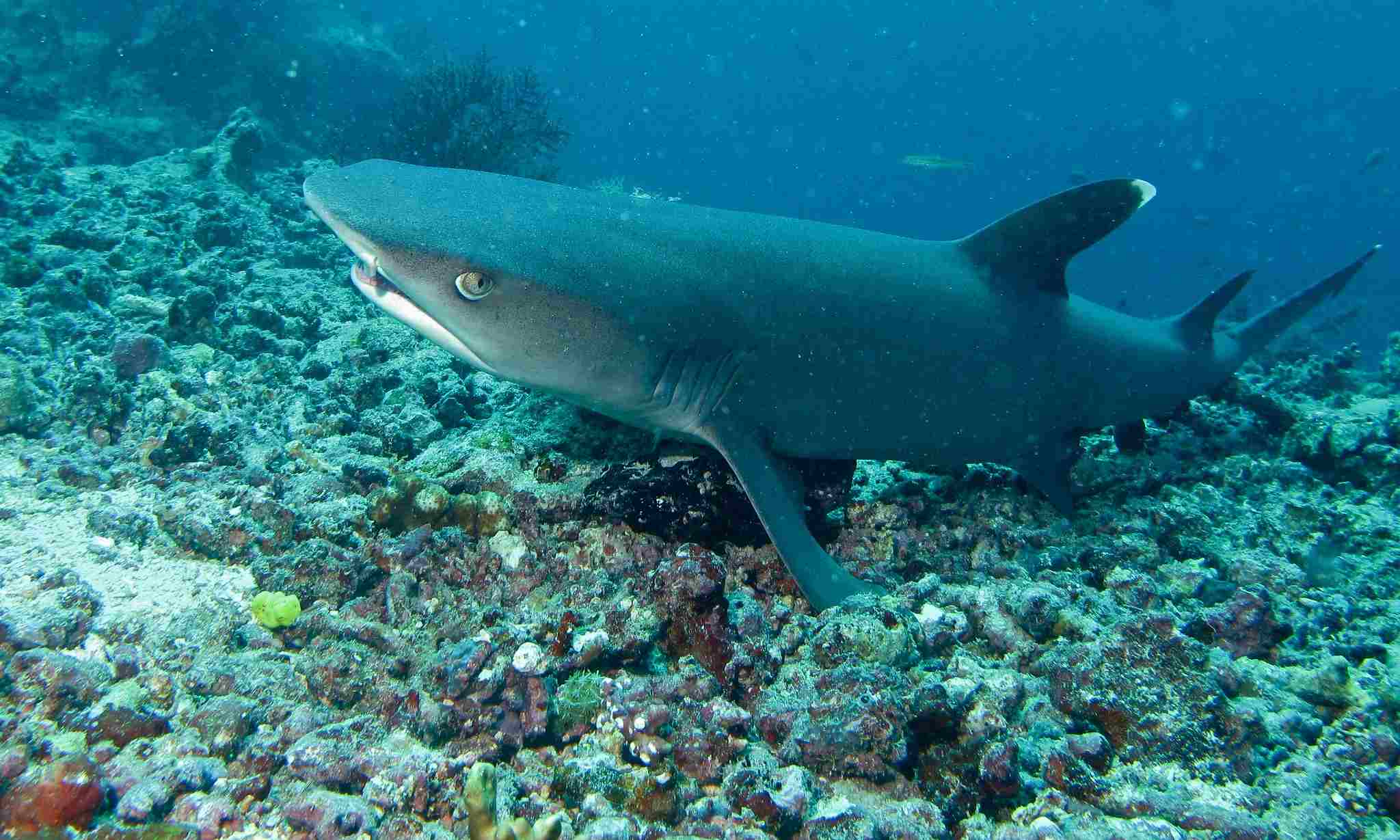
8). Do Squid Eat Starfish?
Squid are known to occasionally eat starfish, although it is not a common occurrence. In fact, it is more likely for starfish to prey on squid than the other way around. Squid are fast and agile hunters, equipped with tentacles and beaks that allow them to catch and consume their prey.
While they primarily feed on small fish and crustaceans, they may opportunistically target starfish if the opportunity arises. It is important to note that squid have a diverse diet and their main food sources typically do not include starfish.
9). Do Sharks Eat Starfish?
Sharks are known to be opportunistic predators, and they do occasionally eat starfish, especially those shark species that hunt at the bottom of the ocean.
However, it is not a common part of their diet. Sharks primarily feed on fish, seals, and other marine mammals. They have sharp teeth and powerful jaws that are designed for tearing through flesh, making them more suited for hunting larger prey.
10). Do Dolphins Eat Starfish?
Dolphins are known for their diverse diet, which includes a wide range of marine creatures. However, starfish are not a common part of their diet. Dolphins primarily feed on fish, squid, and crustaceans, using their sharp teeth to catch and consume their prey.
While dolphins may occasionally encounter starfish in their habitat, they typically do not actively seek them out as a food source. Dolphins are more likely to focus on hunting fish and other small marine animals that provide them with the necessary nutrients and energy.
It’s important to note that dolphins are highly intelligent and adaptable creatures. Their diet can vary depending on the availability of prey in their environment. If there is a scarcity of their preferred food sources, dolphins may resort to consuming other marine organisms, including starfish.
11). Do Turtles Eat Starfish?
Yes, turtles are known to eat starfish. Turtles are omnivorous and opportunistic feeders, meaning they have a varied diet and will consume whatever food is available to them. This includes starfish, among other marine organisms.
Turtles have strong jaws and sharp beaks that allow them to crush and consume the hard exoskeletons of starfish. They use their powerful jaws to break apart the starfish and extract the soft tissues inside. This makes starfish a viable food source for turtles, especially when other preferred food sources are scarce.
It’s important to note that not all turtle species eat starfish. The diet of a turtle can vary depending on its species, habitat, and availability of food. Some turtle species may have a preference for other types of prey, such as fish, crustaceans, or sea grass. However, for certain turtle species, starfish can be a part of their diet.
12). Where are Starfish Found?
Starfish are found in various marine environments around the world. They inhabit both shallow coastal waters and deeper oceanic regions.
In shallow coastal waters, starfish can be found along rocky shores, sandy beaches, and coral reefs. They are often seen clinging to rocks or hiding in crevices, blending in with their surroundings. These areas provide ample food sources and protection for starfish.
Starfish are also found in deeper oceanic regions, where they can be seen crawling along the ocean floor. They are well-adapted to survive in these environments, with their unique tube feet allowing them to move and feed on the ocean floor.
It’s important to note that different species of starfish have different habitat preferences. Some species prefer colder waters, while others thrive in warmer tropical waters. The distribution of starfish is influenced by factors such as water temperature, salinity, and availability of food.
13). How do Starfish Protect Themselves?
Starfish have several unique adaptations that help them protect themselves from predators and other threats in their environment. One of the most notable defenses is their ability to regenerate lost limbs. If a starfish is attacked and loses an arm, it can grow a new one to replace it. This not only helps them escape from predators but also allows them to recover from injuries.
Another defense mechanism is their rough and spiny skin, which acts as a deterrent to potential predators. The spines make it difficult for predators to grip onto the starfish, making it harder for them to be eaten. Additionally, some species of starfish have the ability to release toxins when threatened, which can be harmful or even deadly to predators.
